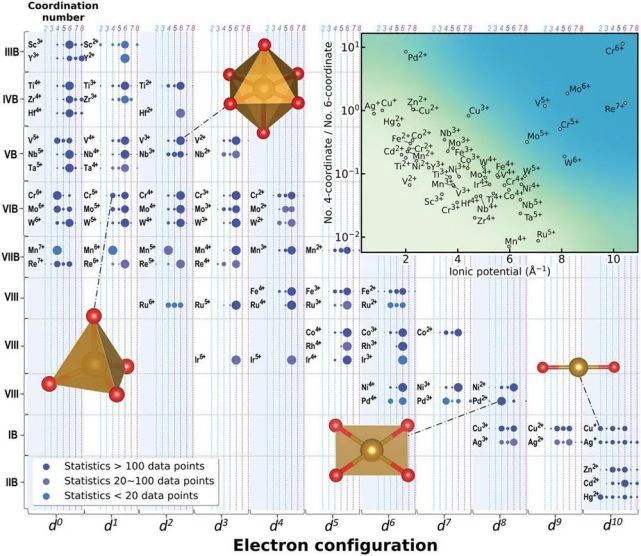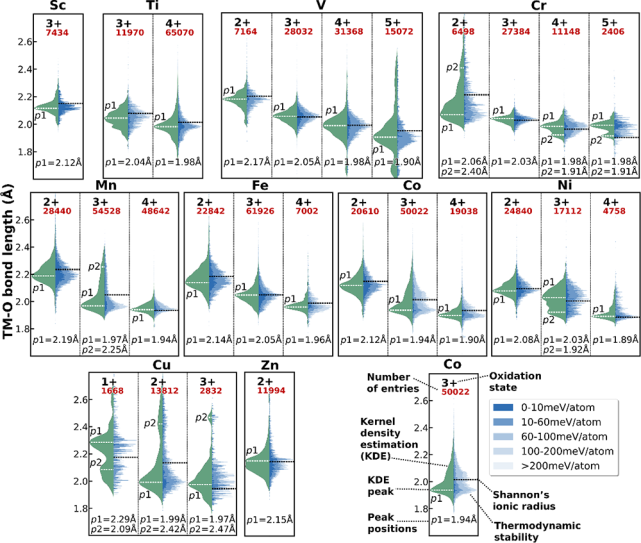Progress | Big data reveals the structure similarity of the transitional metal ions
Author:Institute of Physics of the Ch Time:2022.08.05
Understanding the structure of the "structure-materiality" from the atomic scale is the basic problem in the field of material science, in-depth and meticulous clarification of the statistical characteristics of the material micro-local structure, which helps people better understand physics, materials, chemistry, etc. Scientific issues in many disciplines. Most of the basic data of material science used by people today comes from the middle and late last century, and the value is more old. For example, the amount of ion radius that was widely used in the field of material science for nearly half a century is derived from statistics from the 1960s. With the continuous accumulation of material science data in recent years, massive data will also bring new values and new values and new values in the field of material science. Cognition.

Figure 1. The partial preferences of transition metal ions in the local environment (the "shape" of ions).
Recent The crystal information of more than 10,000 transition metal oxides, refine the detailed information of the physical quantity of the transitional metal ions, the length of the ion key, the length of the atomic, the local deformation, structural stability and other physical quantities caused by the effect of the effect of the atomic magnetic moment, the Jahn-Teller effect. If you replace the extensive use of nearly half a century, only the traditional practice of the "ionic diameter" to characterize the material.

Figure 2. 3D TM-O key length and price stability and thermodynamic stability.
Talking with data, this work shows that each transitional metal ion has its own "shape", "size" and "atomic magnetic torque", thereby outline the "personality" portrait of each transition metal ion in the solid; by manual artificially; artificially manually; Intelligent methods, further obtain the structure similarity of the transition metal ions, can be used to guide the design of new materials and rapid assessment of stability.

Figure 3. 3D statistical results between the atomic torque and price state of the transition metal ions and the Jahn-Teller effect.
Based on the structure similarity of the structure above, the team then replaced the space of human -known compounds with the help of ions, generated more than 60,000 new structures of humans. Ehull <20MEV/Atom), these new materials are easily tested and effectively expanded the "layout" of the compound of material science. The work puts forward new ideas for exploring a wider range of inorganic material phase space, and all compound information can be queried in the Atomly Material Database (https://atomly.net/).

Figure 4. Local structure similarity of transition metal ions. Darkness represents high similarity.
The related work is published in Advanced Science2022, 2202756 (DOI: 10.122/ADVSV). The first author of the paper is Jia Huaxian, a doctoral student in the SF10 group, and other authors also include Dr. Matthew Horton, Dr. Wang Yanan and doctoral students Zhang Shengjie.
The research was supported by projects such as the Ministry of Science and Technology's key research and development plan (2021YFA0718700), the Chinese Academy of Sciences (ZDBS-LY-SLH007, XDB33020000, CAS-WX2021py-0102).
Edit: Paarthurnax
- END -
180 transformed scientific and technological achievements!The Shangyu District Bureau helps the enterprise to relieve the development

In order to further implement the spirit of the provincial, municipal, and distric...
Beautiful!The biggest "Super Moon" in the year is here

Early morning on July 14The largest Super Moon in 2022Debut in the night skyOn the...